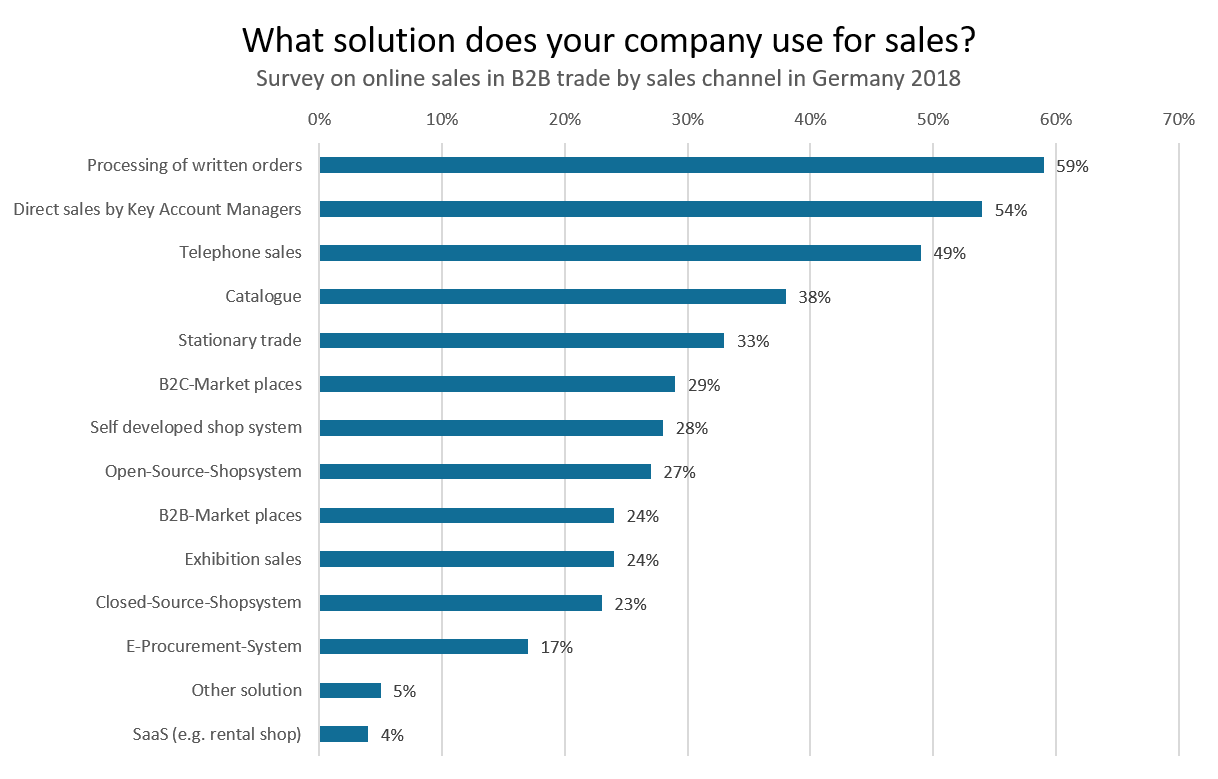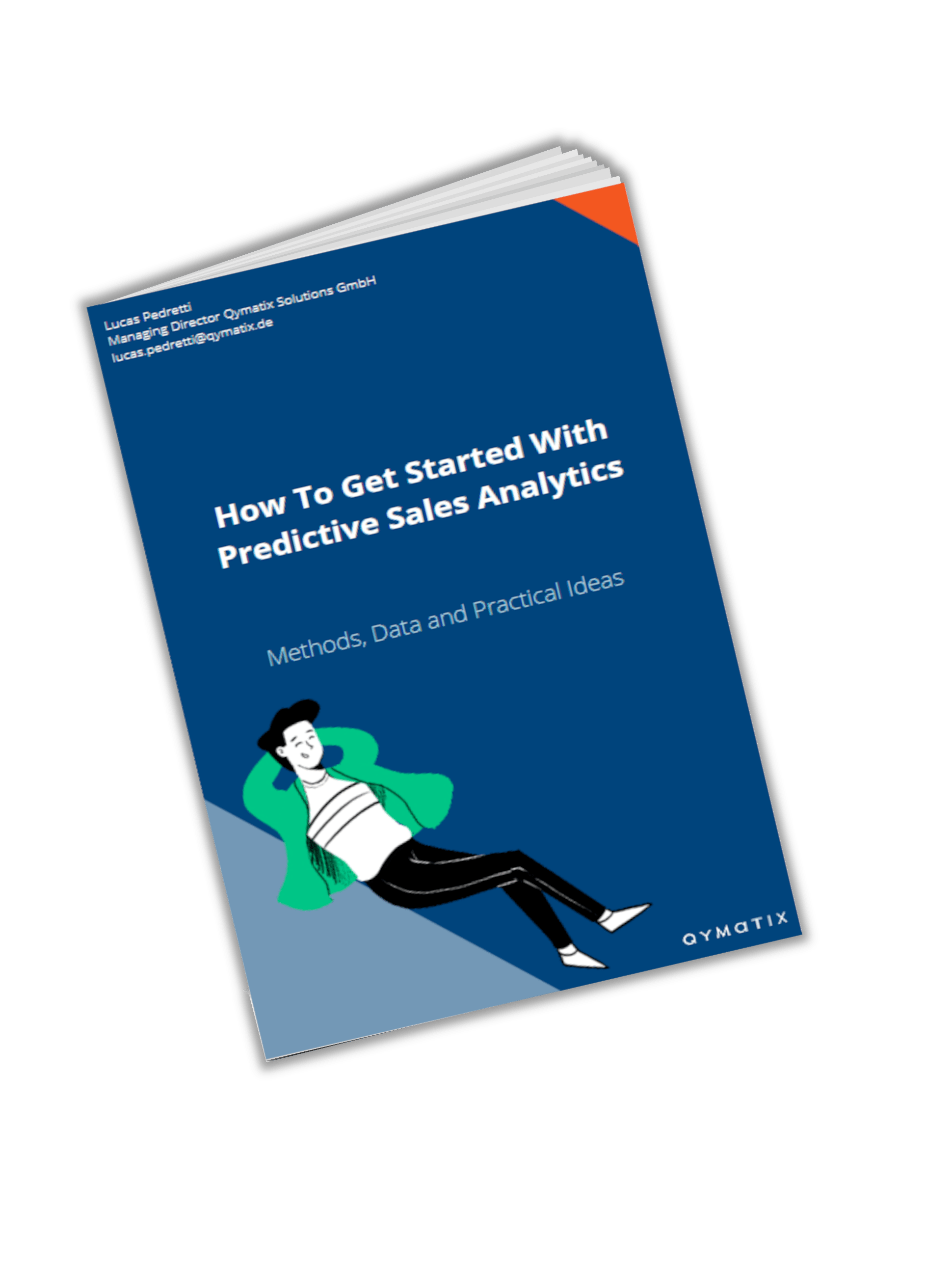How wholesalers and distributors recognize cross-selling potentials with predictive analytics.
Many manufacturers now sell their products directly to end consumers via web marketplaces. Unfortunately, wholesale trade and industrial distribution are coming under increasing pressure as a result.
Calculating cross-selling potentials using modern data mining can be a suitable strategy for keeping pace with the competition.
A glance at the analyses of the Federal Statistical Office shows that almost 90 % of Germans make online purchases at least once a year.
Further interesting facts: 31 % of Germans shop online at least once a month, 29 % at least once every two weeks, and 29 % even buy online at least once a week. Business with online trading is booming, and there is no end in sight. According to the Handelsverband Deutschland (HDE) alone, B2C alone generates worldwide sales of over 1,500 billion euros per year, of which around 50 billion are in Germany.
B2B is not yet broadly geared to e-commerce
Such figures for B2C suggest – at least in theory – that the situation is similar in B2B. However, this is not the case.
According to the German Federal Statistical Office, trade with business and corporate customers via digital channels is also growing – around EUR 1.3 trillion was generated in B2B online commerce in this country in 2018. Yet many companies are still not investing in the digitalization of sales. They are instead sticking to tried and tested, old-fashion, sales practices.
Why? Most wrongly believe that methods and concepts that worked in the past, will stay valid. Incorrect!

As before, the written processing of incoming orders and direct sales by the field service continue to predominate. E-commerce platforms or own online shop systems do not (yet) play the decisive role.
B2B distributors will struggle with B2B e-commerce
The wholesale trade finds itself in a particularly tricky situation when it comes to e-commerce. Many customers and business partners, for example, manufacturers, now sell their products themselves and directly to end consumers via web marketplaces.
The market research company Sapio commissioned recently the e-business specialist Sana Commerce a worldwide study “Digital Transformation & E-Commerce Report 2018/2019”
According to this study, 44% of the manufacturers surveyed operate webshops in which they sell their goods directly to end consumers.
Traditional customers and business partners thus become competitors for the wholesale trade.
Manufacturers expect e-commerce activities to increase their sales volume, improve customer centricity, be more competitive in new markets and customer segments, optimize their online presence and reduce distribution costs. However, direct sales to end customers have consequences: According to the study, around two-thirds of companies worldwide expect that manufacturers, distributors and wholesalers who sell directly to customers in their distribution chain in the future will contribute to an intensification of competition. In the end, prices will fall. Are there any benefits?
Cross-selling in B2B distribution: what are its benefits?
Industrial distributors and wholesalers are facing ever-increasing competitive pressure. Cross-selling can, therefore, be a suitable method that exploits inherent synergy potential and promises favourable and attractive growth opportunities.
Cross-selling means: By selling additional products and services to existing customers, companies create added value from which they and their customers benefit. Customers can purchase different products from a single source. That allows the customer company to reduce the number of its suppliers and to cooperate more closely with selected providers.
However, sales managers often fail to recognize or exploit the potential of cross-selling – one critical obstacle being the realistic determination of cross-selling potential. Here, modern data mining and machine learning can help distributors to understand the hidden potential of cross-selling to increase their business. Using their ERP and CRM sales data, companies can predict the probability of cross-selling with predictive analytics.
Capturing the potential for cross-selling with predictive analytics
Even simple transactions in ERP provides more information to sales departments in distribution than what is commonly assumed. Predictive Analytics (PA) uses techniques such as data mining, machine learning and artificial intelligence to predict the likelihood of potential actions. In this way, PA can also help to identify the possible potential for cross-selling. Predictive analytics evaluates customer actions from the past to derive probabilities for the future. For example, the purchase of additional products from existing customers.
Predictive analytics uses customer information and combines it so that patterns of probabilities ultimately emerge. These hints are recommendations for action and help to design the customer journey, including in distribution.
In the end, predictive analytics is all about user-centricity, which is particularly important in the B2B sector for long-term customer loyalty.
CALCULATE NOW THE ROI OF QYMATIX PREDICTIVE SALES SOFTWARE
E-commerce will also prevail in B2B.
“E-commerce is at the heart of the digital transformation of companies and will change the way they sell,” Michiel Schipperus, CEO and Managing Partner of Sana Commerce, is quoted on the study mentioned above. Companies would experience increased pressure from online competitors entering new markets. Therefore, e-commerce systems should, in future, reflect more than just sales. To keep pace with the competition, companies would have to integrate their e-commerce solutions tightly with their standard business management software (ERP).
Experts are confident that the coming generational change – in management and purchasing departments alike – will increase the desire for change and drive the digitization of business processes. They, therefore, expect immense growth in digital B2B sales. According to figures from the Association of the Internet Industry (eco) and the management consultancy Arthur D. Little, the turnover of goods in e-commerce will rise to 53 billion euros in the German B2B segment in 2020. For comparison: it was 17.4 billion euros in 2012. It is also a challenge for distributors to address this issue in good time and to identify and exploit further sales potential with suitable analytical methods such as predictive analytics.
How relevant is the topic Cross-Selling to you? Tell us your Opinion!
CONTACT US TODAY FOR YOUR PERSONAL CALL
Free eBook for download: How To Get Started With Predictive Sales Analytics – Methods, data and practical ideas
Predictive analytics is the technology that enables a look into the future. What data do you need? How do you get started with predictive analytics? What methods can you use?
Download the free eBook now.
- We will use this data only to contact you for discussing predictive sales KPIs. You can read here our declaration on data protection.

